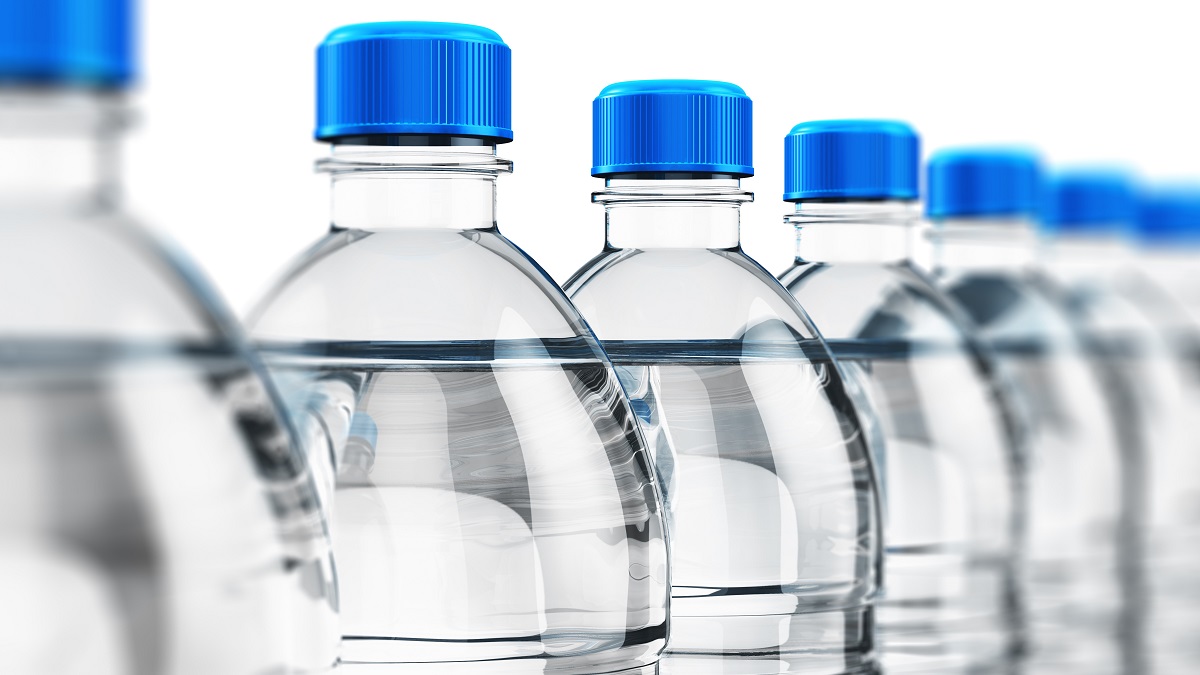
What’s Wrong With Bottled Water

Fancy reusable bottles have long since replaced brand-name bottled waters as status symbols. But even if Evian doesn’t have the cachet it once did, Americans are far from abandoning the single-use plastic water bottle. Americans drink more bottled water than milk or beer. The average American drank almost 47 gallons of bottled water in 2021, and nearly 19% of us drink only bottled water. Yet quitting bottled water is one of the easiest and cheapest ways to reduce your environmental footprint. If you’re not convinced, keep reading to learn about the problems with bottled water.
The Plastic Problem
Most water bottles are made from PET plastic, which is technically recyclable. In 2015 (before China stopped recycling American plastic) only about one-third of plastic water bottles were recycled. By 2020, the recycling rate of PET plastic bottles was down to 27.1% — probably because of the China ban.
Somewhere between half a million and 1 million tons of plastic water bottles are thrown away each year in the U.S. Unfortunately, those unrecycled bottles are not all properly disposed of. Globally, 8 million tons of plastic waste finds its way into the oceans every year, where it forms huge, ecosystem-disrupting garbage gyres and breaks down into dangerous microplastics that are taken up in the food chain.
Climate Contribution
Accurate life cycle analyses are difficult to calculate, and comparisons among them are even less certain, but by one estimate, total emissions from plastics production and incineration are anticipated to reach 56 gigatons of carbon between 2019 and 2050. This is, unfortunately, better than many other packaging options, but fortunately, tap water isn’t packaged at all.
Tap water is pumped relatively short distances from a well or watershed directly to your faucet. But bottled water often travels thousands of miles from its source to your neighborhood shelves.
One survey of carbon impact studies estimated that even locally bottled water has a transportation footprint 300 times that of tap water, with the total carbon footprint of bottled water up to 1,000 times greater than tap water.
Price of Plastic
Many environmentally conscious choices are expensive; organic food and certified wood cost more, and solar panels and EVs take a long time to realize savings. But bottled water is an exception to the rule. One of the easiest ways that going green can save money is to drink tap water.
On average, bottled water costs 4 cents per ounce. If you drink only bottled water, that adds up to around $1,000 per year. Compare that to tap water, which costs on average 3 cents per 100 gallons, or nearly $1 for one year’s worth of drinking water. Saving money becomes an environmental choice when you use the savings to pay the premium for environmentally conscious purchases.
Dirty Water
More than 90% of bottled water users cite safety and quality as the reasons they buy bottled. But roughly a quarter of all bottled water is tap water. Besides, the water quality standards set by the Environmental Protection Agency for tap water are more stringent than the Food and Drug Administration’s standards for bottled water. One (admittedly dated) study found that about a third of the water bottles tested did not meet even those standards.
Studies have also found microplastics in 90% of the bottles tested. Unfortunately, even tap water contains microplastics now, but at much lower levels than bottled water (9.6 particles per liter versus 325 particles per liter). The long-term effects of consuming microplastics are unknown.
The absence of widespread bottle-borne illnesses indicates that bottled water is generally safe, but for most Americans, tap water is safer.
Environmental Injustice
Technically, water is a renewable resource, but fresh water is not always replenished as quickly as we extract it. When you’re drinking water from somewhere else, you may be contributing to water scarcity in another community. For example, half the residents of Fiji don’t have access to clean well water like that bottled for export from the country. Even in the U.S., bottled water companies have been found responsible for depleting local wetlands and streams.
What You Can Do
Living a plastic-free lifestyle is possible, but it requires more effort than most of us can give. Reducing our plastic use through simple changes, on the other hand, is well within everyone’s grasp. Few changes are as simple as avoiding bottled water, even if you need to improve the taste of your tap water.
Originally published on January 24, 2020, this article was updated in January 2023.